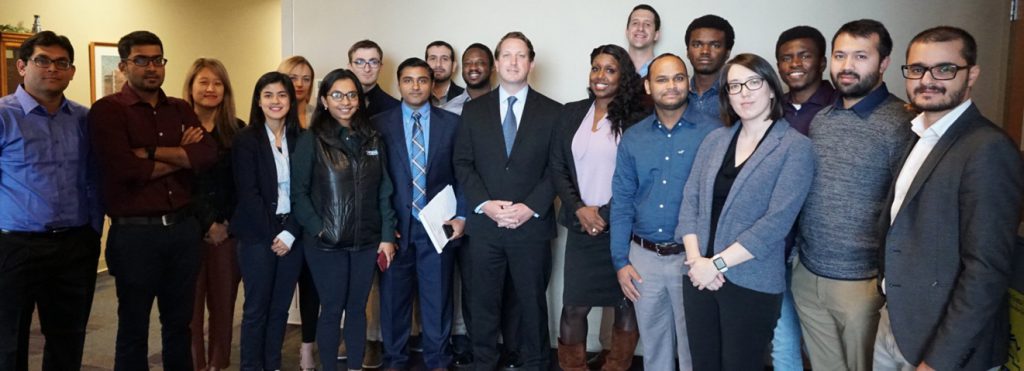U.S. State Department officials view how technology can help government agencies battle foreign propaganda
Researchers at the University of Arkansas at Little Rock demonstrated to visiting government officials how web-based, social-media tracking technology programs can help government agencies identify and analyze foreign propaganda and disinformation.
Dr. Nitin Agarwal, Jerry L. Maulden-Entergy Endowed Chair and Distinguished Professor of Information Science, and his research team at the Collaboratorium for Social Media and Behavioral Studies (COSMOS), are one of 14 groups nationwide participating in the U.S. State Department’s tech demo program to counter foreign propaganda and disinformation threats from international terrorist organizations and foreign countries.
COSMOS hosted members of the Department of State Nov. 28 as part of the Global Engagement Center (GEC) Technology Demonstration Series. Other members of the delegation who joined via video conference included representatives from the Department of Homeland Security, Defense Advanced Research Projects Agency (DARPA), Combating Terrorism Technical Support Office, United States Central Command, and other agencies.
Members of the Technology Demonstration Series are touring the country to view technologies that can help achieve its mission to “lead, synchronize, and coordinate efforts of the federal government to recognize, understand, expose, and counter foreign state and non-state propaganda and disinformation efforts aimed at undermining United States national security interests.” The work of the GEC is focused around four core areas: science and technology, interagency engagement, partner engagement, and content production.
During the visit, COSMOS researchers showcased technologies like Blogtrackers and YouTubeTracker, two of COSMOS’ latest applications that help monitor conversations and discourse on social media platforms. These applications further help in tracking information actors and narratives as disinformation is disseminated through social networks including blogs, YouTube, and Twitter.
YouTubeTracker demonstrates expansion in COSMOS’ research goals from understanding how people consume media via reading to including viewing-oriented information consumption.
“The younger generations consume information more by viewing than reading, so they are becoming susceptible to disinformation that is prevalent on video-based social media platforms,” Agarwal said.
Blogtrackers and YouTube trackers use algorithms that can quickly sift through massive amounts of social media data, but also target the right signals toward users who are trying to manipulate the data.
Algorithmic warfare is becoming an increasingly hot topic as companies like Google, Twitter, and YouTube have realized that the algorithms they use to search and recommend content to their users are susceptible to manipulation by outside forces, Agarwal said. As an example, hackers could target Google’s search algorithms to make a website with false information appear higher in search results, therefore making the website look legitimate.
In the upper right photo, members of COSMOS and the Department of State discuss how COSMOS’ technology can assist in the identification and analysis of propaganda and disinformation.
